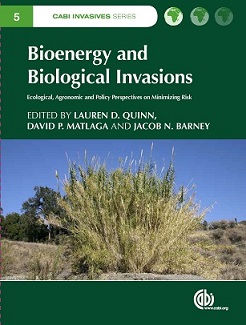 Across the globe, efforts are being made to find sustainable, renewable, and economically-viable sources of energy. Here in the U.S., Congress passed a mandate in 2007 (the Renewable Fuel Standard, or RFS) that requires refiners to blend an increasing quantity of biomass-derived ethanol into gasoline. The RFS stipulated that corn-based ethanol would be capped at a certain level, while fuels from so-called “advanced” biomass feedstocks would take up the slack. These feedstocks are desirable because, unlike corn, they do not compete with our national food supply and can be grown with fewer agricultural inputs on degraded land.
Across the globe, efforts are being made to find sustainable, renewable, and economically-viable sources of energy. Here in the U.S., Congress passed a mandate in 2007 (the Renewable Fuel Standard, or RFS) that requires refiners to blend an increasing quantity of biomass-derived ethanol into gasoline. The RFS stipulated that corn-based ethanol would be capped at a certain level, while fuels from so-called “advanced” biomass feedstocks would take up the slack. These feedstocks are desirable because, unlike corn, they do not compete with our national food supply and can be grown with fewer agricultural inputs on degraded land.
A number of advanced feedstocks have been trialed in the U.S., and several have been shown to produce extremely large biomass yields. However, it has been pointed out that the traits of an idealized biomass feedstock (e.g., fast growth, large biomass, ability to grow on poor-quality land) are similar to traits of invasive plant species. A new book, co-edited and co-authored by ISTC Technical Editor Lauren Quinn, explores the issue of invasiveness in bioenergy feedstocks.
Bioenergy and Biological Invasions provides in-depth coverage of the biology, ecology, and risk assessment of invasive plants, focusing on those that have been identified as potential bioenergy sources: large perennial grasses, algae, short-rotation woody crops, and others. The book also examines federal and state policies pertaining to invasive plants and bioenergy crops, and considers methods to mitigate the risks of invasion by novel feedstocks.
One of the mitigation solutions proposed in the book is the sustainable harvest of existing invasive plant populations as a source of biochar or a source of biomass for combustion or conversion to fuel products. The ISTC is a leading force in research and development of biochar as a soil amendment and for carbon sequestration, and our researchers are currently investigating novel feedstocks as sources of biochar.
The idea of harvesting existing invasive plant populations for biomass is relevant to a current collaboration between ISTC and the Illinois Department of Transportation (IDOT) to test the energy applications of switchgrass (Panicum virgatum) and other plants harvested from roadways. Although it is native to much of the U.S., the jury is still out on the invasion potential of switchgrass. However, ISTC researchers collaborating with IDOT have determined that switchgrass pelletized for combustion is an economical method of maximizing the energy present in this plant. In addition, alternative energy applications of switchgrass are being investigated through ISTC funding. Researchers from Eastern Illinois University, supported by an ISTC grant, performed an exploratory study on the potential for switchgrass pellets to produce syn-gas, reporting that switchgrass pellets were successfully co-gasified with wood chips in a 50/50 mix.
Biomass-based bioenergy offers one potentially sustainable way to move beyond fossil fuels, as discussed in the book and as illustrated by the innovative ISTC research highlighted here. However, as the biomass market scales up, it will be increasingly important to avoid introducing invasive species, to avoid replacing one problem with another.

